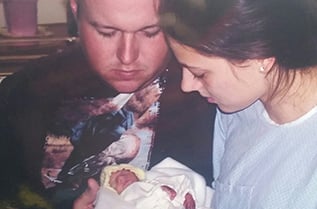This biochemical test is a quantitative measurement of beta-hexosaminidase A and beta-hexosaminidase B enzyme activity and can be used as a 1st tier test for patients with a clinical suspicion of Tay-Sachs/Sandhoff Disease. Demonstration of deficient beta-hexosaminidase enzyme activity is considered the gold standard to confirm a diagnosis of Tay-Sachs/Sandhoff disease.
2 weeks
83080
$200
Tay Sachs disease is an autosomal recessive lysosomal storage disorder (LSD) caused by significantly reduced or absent activity of beta-hexosaminidase A. This deficiency results in accumulation of GM2 ganglioside which leads to the destruction of neurons in the brain and spinal cord. Although infants with Tay Sachs disease have normal developmental progress until the age of 3-6 months, regression becomes evident as the disorder progresses. Features of this condition include hypotonia, an increased startle reflex, inattentiveness, a retinal cherry-red spot, and loss of motor skills. Over time, seizures, hearing and vision loss, and spasticity develop, and most affected children die by the age of five. Tay Sachs disease occurs more frequently among specific groups including Ashkenazi Jewish, French Canadian, Pennsylvania Amish, and Louisiana Cajun populations. Sandhoff disease is clinically indistinguishable from Tay Sachs disease, but it results from deficiencies in both beta-hexosaminidase A and hexosaminidase B. Higher frequencies of Sandhoff disease have been reported among individuals with backgrounds including Northern Argentina Creole, the Metis population in Saskatchewan, and Lebanese descent.
This test can be used to confirm a suspected diagnosis of Tay Sachs or Sandhoff disease.
4-methylumbelliferyl substrate
Enzyme activity can be measured in plasma or leukocytes. For whole blood, please send 5-7 ml of whole blood in a green top (sodium heparin) tube OR plasma can removed from spun down sample and sent frozen.
Whole blood should be sent over overnight at ambient temperature. Do not freeze whole blood. Samples for enzyme analysis must arrive to the lab the next day. Cultured fibroblasts can be sent overnight at room temperature.
Call our laboratory at 1-800-473-9411 or contact one of our Laboratory Genetic Counselors for assistance.
Robin Fletcher, MS, CGC
Falecia Thomas, MS, CGC
Alex Finley, MS, CGC
